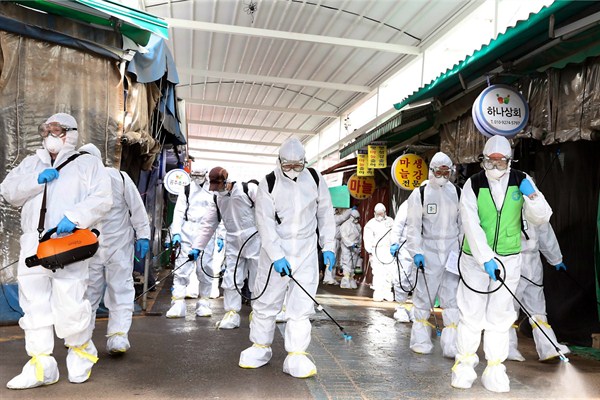The Wuhan coronavirus, now officially named COVID-19, reveals how vulnerable humanity remains to virulent pathogens. A century after the devastating Spanish flu pandemic, public health officials are scrambling to prevent this latest plague—which as of Feb. 24 had infected more than 79,000 people in at least 29 countries, most of them in China—from becoming another pandemic. As they do, it’s worth taking a step back to consider the stubborn staying power of infectious disease. Far from an anomaly, this outbreak is the shape of things to come.
Humanity is currently experiencing its fourth great wave of infectious disease. The first coincided with the agricultural revolution some 10 millennia ago. A more sedentary lifestyle, higher population density, closer proximity to domesticated animals and the appearance of parasitic species like rodents and insects in human settlements enabled more pathogens to jump between species. A second great wave began during classical antiquity and lasted through the Middle Ages, as commercial and military contact among major centers of civilization exposed formerly isolated societies to new diseases and created new vectors—rats, fleas—that spread pestilence across the Mediterranean and Asia. Between the 14th and 17th centuries alone, more than 200 million people died of bubonic plague. The third phase occurred after 1500, as explorers, conquerors and colonists from Europe brought new pathogens to the Americas, Africa and Australasia, and sometimes back again, with devastating results.
Today, development and globalization are driving a new era of infectious disease. Since 1980, scientists have discovered new human pathogens at a rate of more than three per year. Nearly three quarters are viruses, and the vast majority are zoonoses, or diseases that leap from one animal reservoir to another, often recombining DNA along the way. As humans exploit and disrupt once isolated ecosystems, they and their domesticates inevitably come into closer contact with wild species and the novel pathogens they host. Among the recent viruses that have jumped to humans from animals are HIV/AIDS (chimpanzees and mangabeys), Marburg (bats), Ebola (bats), hantavirus (mice), Nipah virus (bats, pigs), H5N1 (wild birds), H1N1 (pigs), SARS (bats, palm civets), MERS (camels), West Nile (wild birds, horses), Zika (monkeys and rodents), and now COVID-19 (bats). The booming trade in wildlife food often sees multiple live species for sale in close proximity, as at the Wuhan market where COVID-19 is suspected of taking off, increasing the opportunities for viral exchanges.

